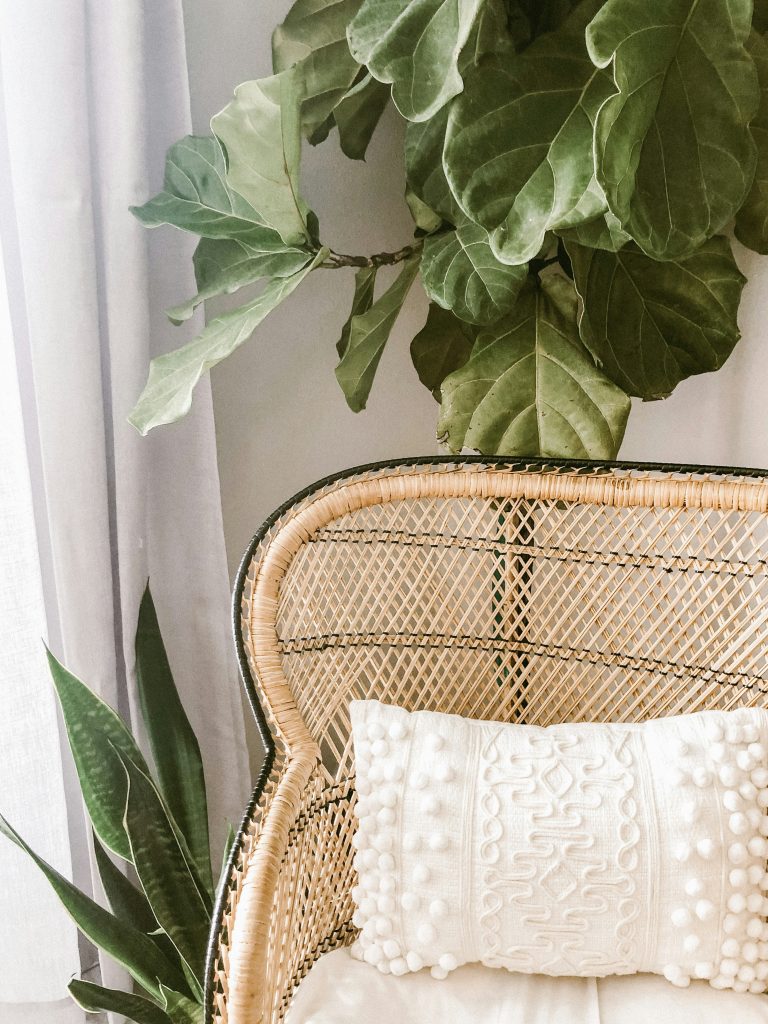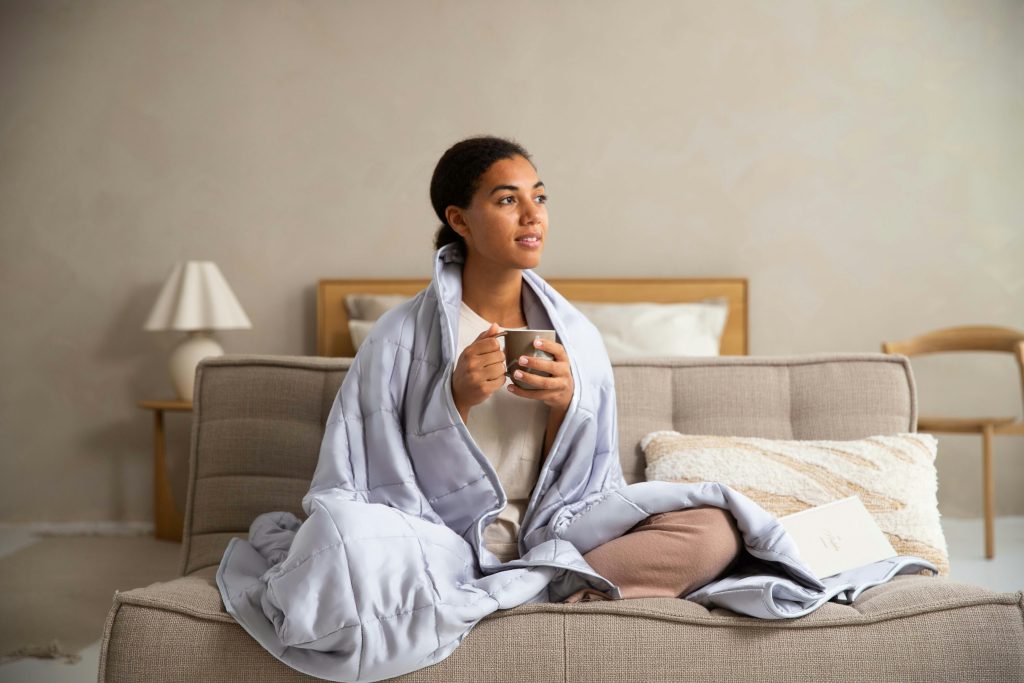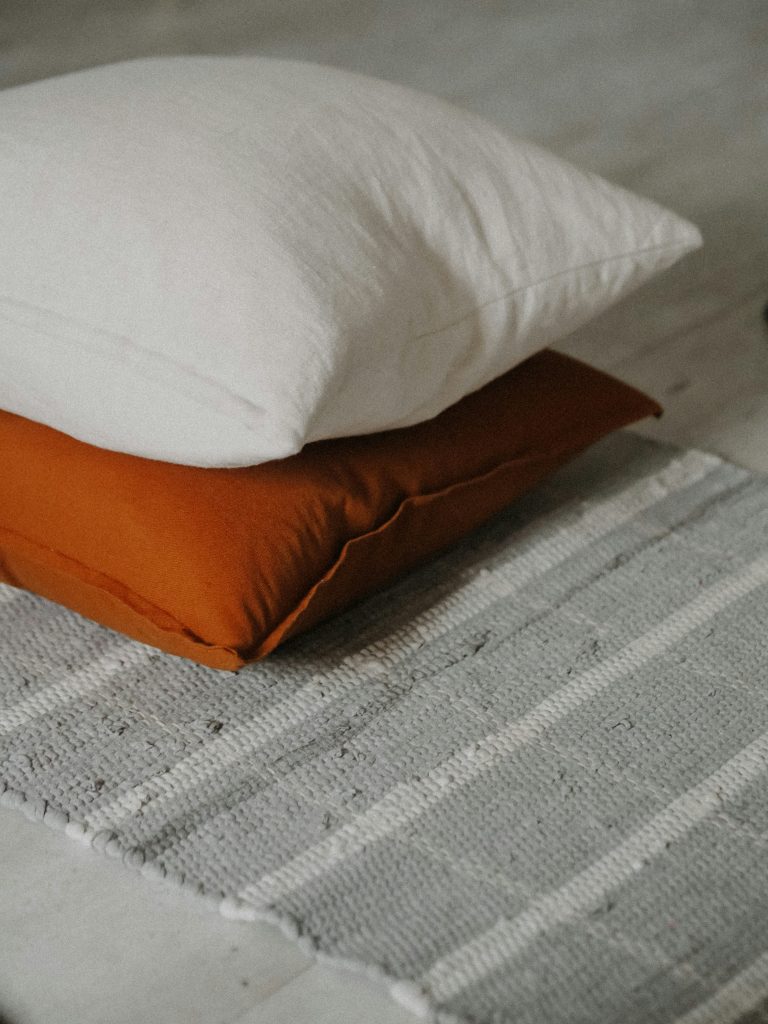Regulate Your Nervous System to Help Ease Climate Anxiety
Guest posts |
We are proud to be representing a natural and sustainable product. Inherently, to prove its sustainability, we may compare other products that are far less sustainable. In discussing the current climate crisis, as well as the harmful effects of synthetic fibers, we feel a responsibility to provide resources to help navigate this information so that we can continue being informed consumers without experiencing overwhelm, burnout, and apathy. Our actions matter, individually and collectively.
Stanford psychologist Britt Wray discusses climate anxiety, mentioning that “to feel some distress is an appropriate, even a rational response to the global threat of climate change because there are a lot of things we care about that are in harm’s way… Regulating [our] emotions is key” (World Economic Forum).
In this article, we will explore five ways to regulate your nervous system, incorporating cotton every step of the way.
**This article is not a substitute for professional medical advice. If you need support, please seek a qualified mental health provider.

What does nervous system regulation mean?
The nervous system connects the mind and body. It has two main branches: the sympathetic nervous system, which triggers “the ‘fight or flight’ response” and the parasympathetic nervous system, “which promotes a state of relaxation and calm” (McMaster University).
In a dysregulated state, our sympathetic and parasympathetic nervous systems are out of balance. We feel overwhelmed and “struggle to problem-solve, make rational decisions, [and/or] engage positively with others” (Positive Psychology). This can also lead to functional freeze, a state when “an individual perceives a threat as overwhelming or inescapable, [and] the dorsal vagal complex can trigger a response known as the ‘shutdown’ or ‘freeze’ response” (Khiron Clinics). This is often the feeling of productivity at work or in necessary tasks but the feeling of intense fatigue or perceived “laziness” in your personal life.
Ways to Regulate
Of course, there are a range of ways to help soothe your anxiety, specifically as you’re taking in intense information. Consistently incorporating physical movement, humming, breathwork, and mindfulness are all proven mediums to help soothe. According to psychiatrist Dr. Arielle Salama, in a seminar titled “Understanding Emotional Regulation,” channeling the five senses can also be really helpful (see presentation slide below for further information).
The Soothing Touch of Calm-Inducing Cotton

There are many ways to regulate your nervous system, and incorporating cotton products into your daily routine can be an effective and natural way to soothe anxiety.
1. Cotton Blankets:
Using a soft cotton blanket can provide comfort and a sense of security, helping to soothe anxiety and promote relaxation. The softness is incredibly impactful, but you can even take it a step further and opt for a weighted cotton blanket which “can help you tap into your parasympathetic nervous system. These blankets are a form of deep-pressure touch stimulation (DPTS), which helps decrease the fight-or-flight response activated by anxiety. Aim for a blanket that is 5-12% of your body weight“ (McMaster University).
Out and about? Consider storing a lightweight cotton scarf in your bag. Wearing a soft cotton scarf or wrap can provide a sense of comfort and security, similar to a hug, which can help alleviate feelings of stress or anxiety throughout the day.

2. Cotton Clothing:
Wearing loose, breathable cotton clothes can enhance comfort, reduce sensory overwhelm, and help maintain a balanced body temperature, all of which can support a calmer nervous system.
3. Cotton Bags for Stress Relief:
Create small cotton bags filled with rice or flaxseed. Warm them in the microwave or cool them in the freezer and use them as a soothing heat pack to relieve tension in the body. Adding herbs or essential oils like lavender or chamomile is also proven to help with relaxation (Cleveland Clinic).
4. Cotton Meditation Cushions:
Using cotton meditation cushions can create a comfortable space for your mindfulness practice, helping to ground you while meditating, especially paired with a cotton mat!
Our emotions and trauma can be stored in our hips – elevating them during a meditation session can help relieve pressure, pain, and stress on the body. Consider additional somatic exercises to help release the stored emotions (Healthline).

5. Cotton Eye Masks:
Using a cotton eye mask during sleep, rest, or meditation can create a dark, soothing environment that promotes relaxation and can help with anxiety and sleep quality. In a study conducted by Harvard University, “Light exposure at night affects the natural processes that help prepare the body for sleep…Light exposure misaligned with our circadian rhythms — that is, dark during the day and light at night —[can put] people at higher risk for serious health problems,” including the inability to regulate your nervous system.
Closing Thoughts
In a world where climate anxiety is increasingly common, it is essential to equip ourselves with tools that prioritize emotional well-being. By incorporating cotton products into our daily lives, we can create a soothing environment that nurtures both our bodies and minds. Remember, each small action contributes to a larger impact—on ourselves and the planet. As we navigate the challenges of climate change, let us prioritize our mental health and support each other in this journey. Together, we can cultivate resilience and hope for a sustainable future.

Sources
https://www.youtube.com/watch?v=GBsiJ9bgeuI
https://www.weforum.org/stories/2023/12/what-is-climate-anxiety-protect-mental-health-britt-wray/
https://positivepsychology.com/nervous-system-regulation/
https://health.clevelandclinic.org/stressed-out-aromatherapy-can-help-you-to-feel-calmer
